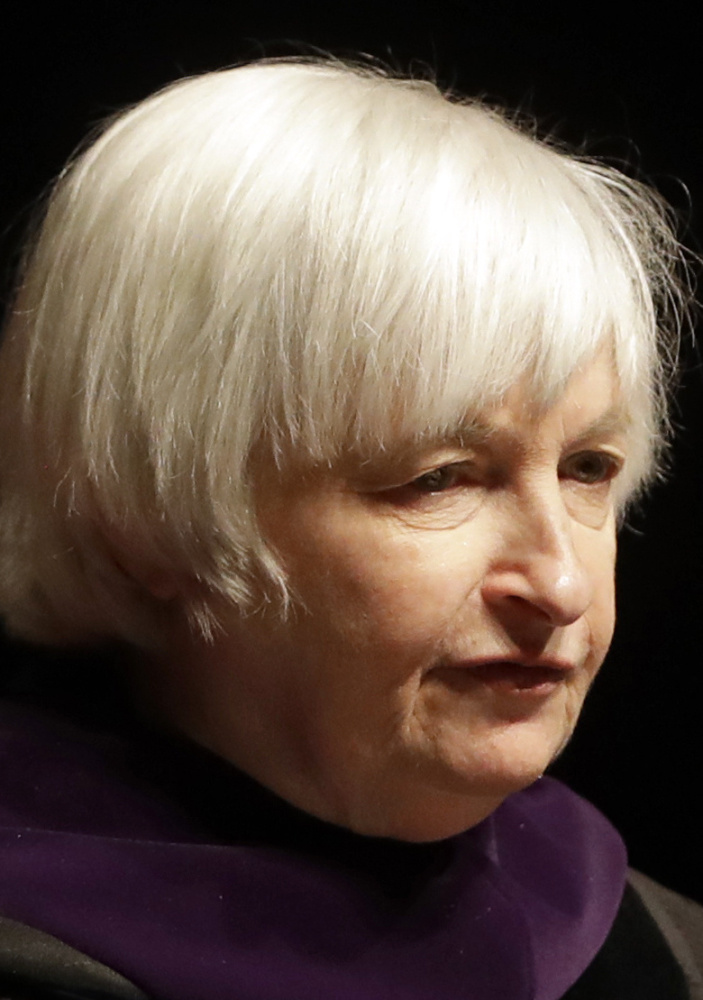WASHINGTON — After three years of almost single-handedly juicing up the slow-growing economy, Janet Yellen and the Federal Reserve should be looking at easier days ahead.
Yellen, in what will probably be her last full year as Fed chair, may finally get help from somewhere else in Washington.
Tax cuts and infrastructure spending planned by President-elect Donald Trump, if backed by the Republican-controlled Congress, would lighten the load for a Fed whose easy-money policies have been the primary economic support for the nation.
She is already breathing easier on the Fed’s employment mandate; the jobless rate is at a nine-year low of 4.6 percent. Inflation, too, is under control and, by all accounts, creeping toward the central bank’s optimal level of 2 percent.
And yet, Yellen may come under as much economic and political pressure as ever, on both the Fed’s policy and the independence of the institution.
The Trump administration is almost certain to push back as she and her colleagues lift interest rates from historical lows. The Fed began with a small increase in its benchmark rate this month, only the second rise in more than a decade. But officials signaled a quickening of rate hikes in 2017.
As a presidential candidate, Trump offered contradictory views when it came to the Fed. He first applauded Yellen, saying he too was a “low-interest-rate person.” Later he accused the Fed leader of keeping rates low for political reasons and said he would most likely replace Yellen when her term expires in early 2018. Trump’s pick for Treasury secretary, Steven Mnuchin, said that he thinks Yellen has done a good job.
No one knows for sure where Trump and his economic team stand on monetary policy. The New York real estate developer, who has capitalized on cheap rates, didn’t comment or tweet about the Fed’s widely expected rate bump on Dec. 14. But if history is any guide, he’s not likely to favor faster interest rate increases.
“No president ever does,” said Alice Rivlin, a former Fed vice chairwoman.
That’s because higher interest rates increase borrowing costs for businesses and consumers, which tends to slow lending and investments. The interest-sensitive housing market will be particularly vulnerable. The 10-year bond yield, a benchmark for mortgages, already has jumped to 2.6 percent from 1.8 percent in early November on expectations that a major fiscal stimulus would lift economic growth and inflation.
Fed policymakers have forecast the equivalent of three quarter-point rate increases for next year, but some economists see four or more hikes. And while Yellen has been cautious to reserve judgment on any anticipated fiscal stimulus, she seemed somewhat cool to the idea when asked immediately after the Fed’s rate increase announcement.
“I do want to make clear that I have not recommended running a hot economy as some sort of experiment,” she said.
Send questions/comments to the editors.


